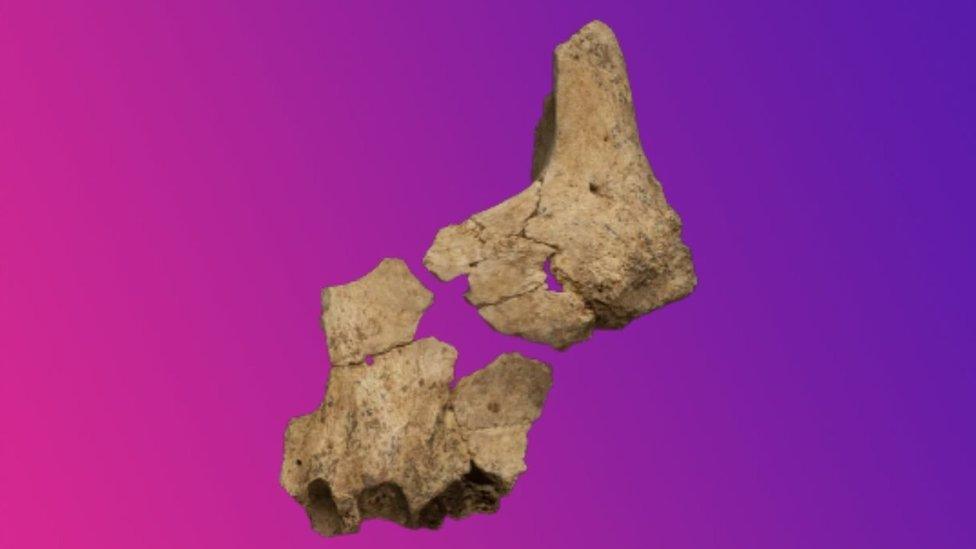How did prehistoric humans stay warm?
- Published
- comments
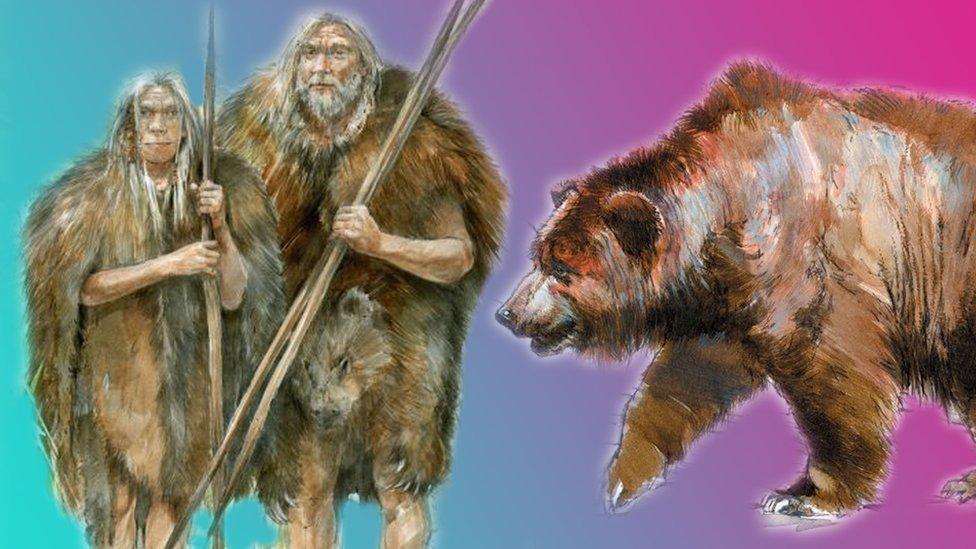
An artistic interpretation of (L) early humans wearing cave bear skins for protection from the cold and (R) a cave bear
Nowadays we can stay indoors, pop on an extra layer or snuggle under a blanket when we're chilly in the winter, but how did prehistoric humans stay warm?
Well, a new study has revealed the earliest Homo sapiens used bear skin to help them stay cosy in the harsh winters.
Researchers looked at old animal remains at an Old Stone Age archaeological site in Lower Saxony in Germany, where the world's oldest spears were also discovered.
It was the markings on those bones that led to their findings - let's take a closer look.
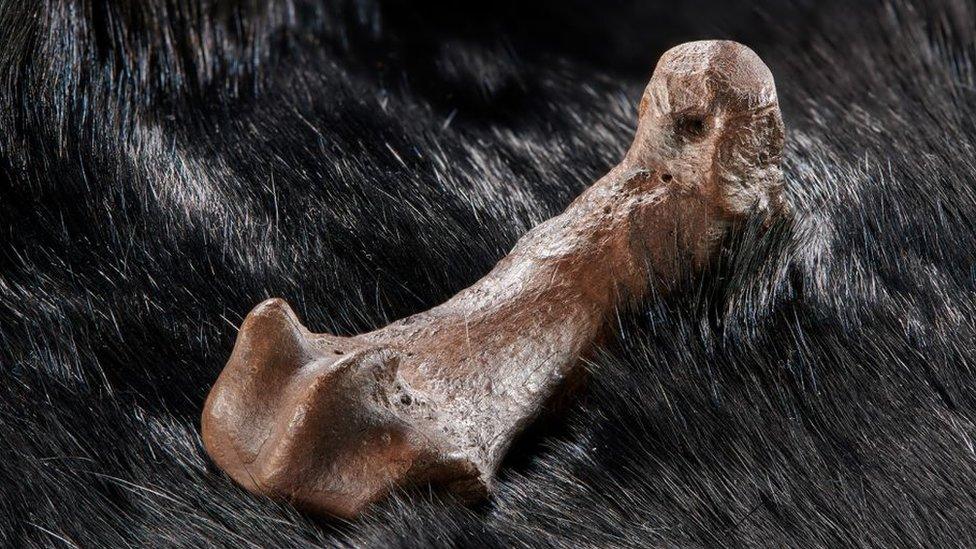
This is one of the foot bones researchers looked at. It you look carefully, you can see a few small cut marks in it
The foot and toe bones of the bear remains discovered in the town of Schöningen were found to have precise cut marks on them.
Experts usually see this as a sign that the animals were hunted and eaten.
But there's not much meat to eat on the feet and toes of a bear so researchers think the markings were caused by humans very carefully cutting and stripping the bear of its skin to wear kind of like a coat.
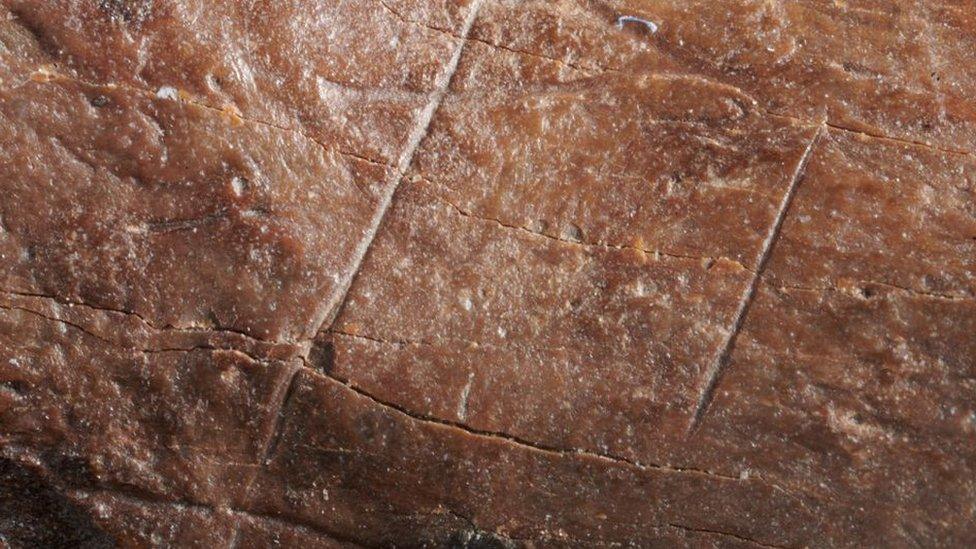
A closer look at the markings in the foot bone
Ivo Verheijen is one of the researchers from the University of Tuebingen in Germany who worked on the study, he said:
"These newly discovered cut marks are an indication that about 300,000 years ago, people in northern Europe were able to survive in winter thanks in part to warm bear skins."
The cave bear - which is extinct now - had long outer hairs and short dense hairs meant it was highly insulated - which means it kept the warmth in very well.
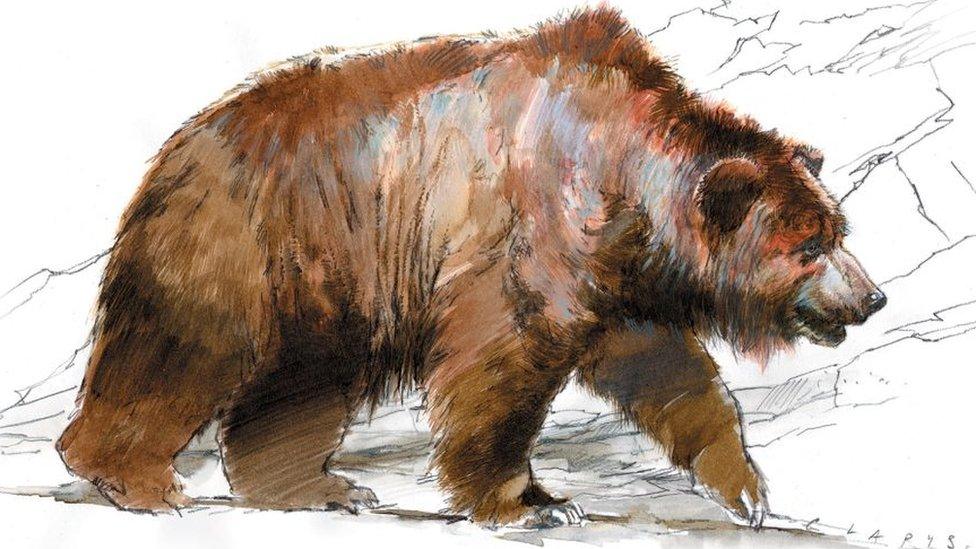
Did you know cave bears could reach a length of more than three metres and a weight of more than 1000kg during the ice ages!
Researchers say the use of bear skins is likely to be a key change early humans made in order to survive in the climate of the north.
This research is part of a long-term excavation project at the Old Stone Age sites in Schöningen.
- Published12 September 2022
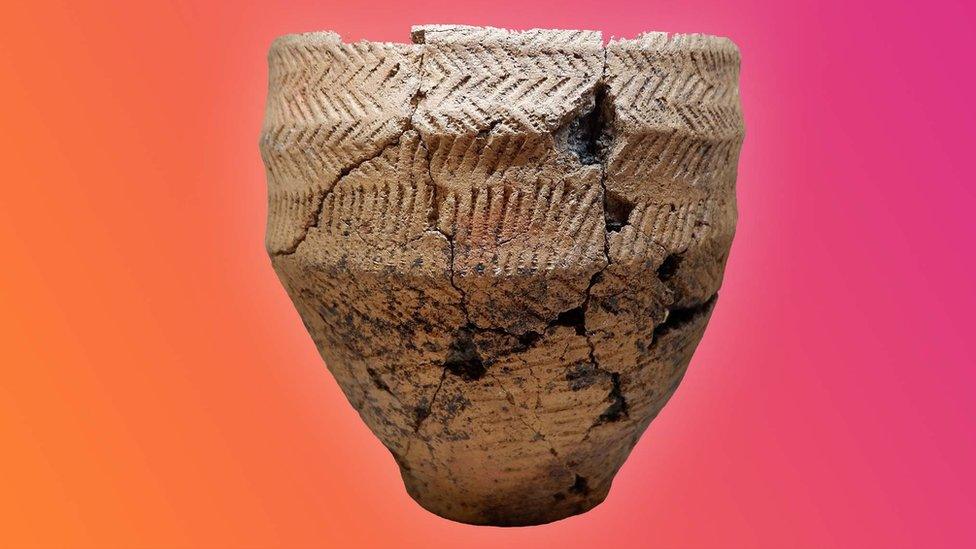
- Published10 August 2022

- Published13 July 2022
